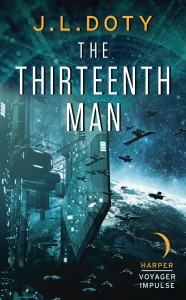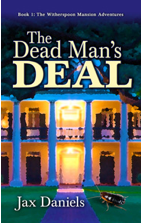When Jennifer Carson asked me to write a guest blog about my path to self-publishing, I was thrilled. I started writing about thirty years ago with no training or experience in fiction. I had concocted all these stories, and I wanted to write, so I just sat down and started writing, pencil on paper. The first thing I wrote was a 250,000-word SF novel that was so bad it never saw the light of day—and never will, but I learned a lot.
After that dismal failure, I wrote
Child of the Sword.
In the 80s, I submitted it to Del Rey, and an editor there showed interest.
We corresponded back and forth for several months making changes, and then Judy-Lynn del Rey died.
The correspondence dried up at that point, and I got a rejection letter. I’ve always suspected that the uncertainties at Del Rey following her death had something to do with it.
I had no idea how lucky I was to get the attention of an editor at one of the major SF houses.
I had a demanding day job, but I continued writing, submitting, and being rejected. In early 2012, I had four completed books, plus a couple more about half done, along with a stack of rejection slips. I remember wallowing in self-pity and thinking, Someday I’ll die, and no one will have ever read anything I wrote.
At that point I decided, What the f*$#@*@$k and started self-publishing. I lined up my books one by one, about one every quarter, got a cover made, formatting done, and published them for 99¢ on Amazon and Smashwords.
I had this day-job that required me to fly to Europe and Asia ten to fifteen times a year, plus about ten coast-to-coast trips in the U.S. I was basically living on Mars-Central-Standard time and had no time to do any of the savvy marketing stuff that self-published writers are supposed to do. I just threw the eBooks out there and ignored them.
The first three books trickled along, sold a couple of copies every month, and it was really gratifying to get the occasional nice review from a reader. Then in late 2012, I published Child of the Sword, and—what the heck—raised the prices on all my books to $2.99. I threw Child out there and ignored it like the other books, then got on a plane and flew somewhere. About two weeks later, I checked its sales, hoping it had sold a copy or two. When I logged onto Amazon, I learned it had sold 85 copies—and was climbing; within four weeks it was selling 150–200 copies a day. Needless to say I was stunned, and I truly did believe I’d get a call from Amazon: “Mr. Doty, we’re really sorry, but there’s been an accounting error. It was J. L. Duty who sold all those books, not you. We’re taking the money back.”
When it finally sank in that it was real, I had some money saved up, and I was making a decent living as a writer, so I quit my demanding day job. No longer a running dog lackey for the Bourgeois capitalist establishment, I was now a full-time egalitarian writer. Wah whoo!
I had dozens of questions about what was happening, what to expect, what should I do, etc. The good news is, by searching through blogs and online forums, I quickly got answers to all my questions. The bad news is, I got ten different answers to every question. Even worse, more often than not, all ten were wrong.
Other self-published writers told me, “. . . you can’t sell books without a lot of Facebook friends and Twitter followers.” So I rushed home to set up Facebook and Twitter accounts. Right after I set them up, I was sitting at my computer and checked my sales figures: I had sold somewhere around 15,000 books, and still no Facebook friends or Twitter followers. Hmmm!
I went to LosCon in late 2012, right about the time Child had sold 10,000 copies. BTW, an excellent Con that I will attend every year. Everyone there agreed that, with the book’s track record, I’d have no problem signing up with a traditional publisher—there are plenty of reasons for a successful self-published writer to do so, but that’s fodder for another blog. Boy, were they wrong.
A well-known small press publisher said his biggest press run was less than half what I’d already sold, so I’d be disappointed with him—he’s wrong, but that’s what he believes. One agent, said, “I’m not interested in anyone who’s self-published, especially someone who’s sold a lot of eBooks.” He used a certain romance writer as an example. She had sold about 100,000 eBooks and because of that got a traditional contract. He said, “She trained all her readers to buy cheap books. That’s why she bombed with traditional publishing.”
Two years ago when I approached traditional publishers and agents, I’d get this nonanswer response, and I’m almost certain I saw fear in their eyes. I think they were honestly concerned that people like me would put them out of business. A year later the fear was gone; I think they realized they weren’t going out of business, though there would be a new paradigm for the publishing industry. Today, it sounds like they all got together in a room, and carefully chose the wording they would use to reject successful self-published writers. We don’t want to see something that you’ve successfully sold, but show us something new and unsullied by self-publishing. I suppose, in many ways, that is reasonable.
As of this writing (December 2014) SFWA is going to vote in January on the criteria for admitting successful self-published writers. Apparently, admitting self-published writers is a foregone conclusion, the only issue being the criteria for successful. From what I’ve heard, the criteria they’ve chosen is reasonable, and there’s no double standard for self-pub vs. traditional-pub.
To date, I’m close to about 50,000 books sold. What’s going to happen in the future? When I try to predict the future I usually lose money in the stock market. The best thing any of us can do to promote our books is sit down and write the next one.
Interested in more authors’ Paths to Publishing? This month, Melissa Snark is hosting a series of guest blogs on that subject. See my story about how I got into the editing and publishing world. Jennifer L. Carson’s Path to Publishing.

 Trained as a scientist with a PhD in Electrical Engineering (specializing in laser physics), J.L. DOTY has been writing science fiction and fantasy for over thirty years. He has nine published novels, including the three series: The Treasons Cycle, The Gods Within, and The Dead Among Us. Born in Seattle, he now lives in Arizona with his wife and three cats. He writes full-time now and continues to focus on speculative fiction, but never with lasers as a weapon, since most writers invariably get that wrong.
Trained as a scientist with a PhD in Electrical Engineering (specializing in laser physics), J.L. DOTY has been writing science fiction and fantasy for over thirty years. He has nine published novels, including the three series: The Treasons Cycle, The Gods Within, and The Dead Among Us. Born in Seattle, he now lives in Arizona with his wife and three cats. He writes full-time now and continues to focus on speculative fiction, but never with lasers as a weapon, since most writers invariably get that wrong. About Voyager
About Voyager



